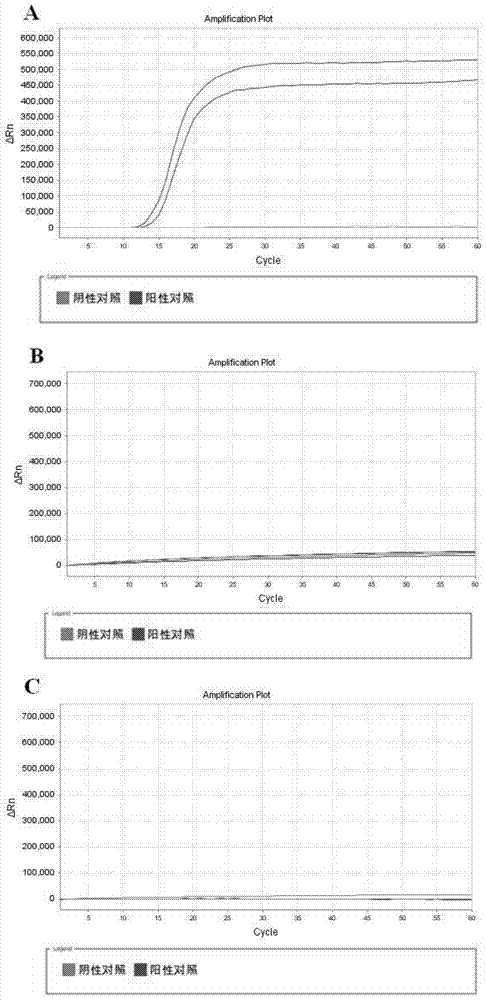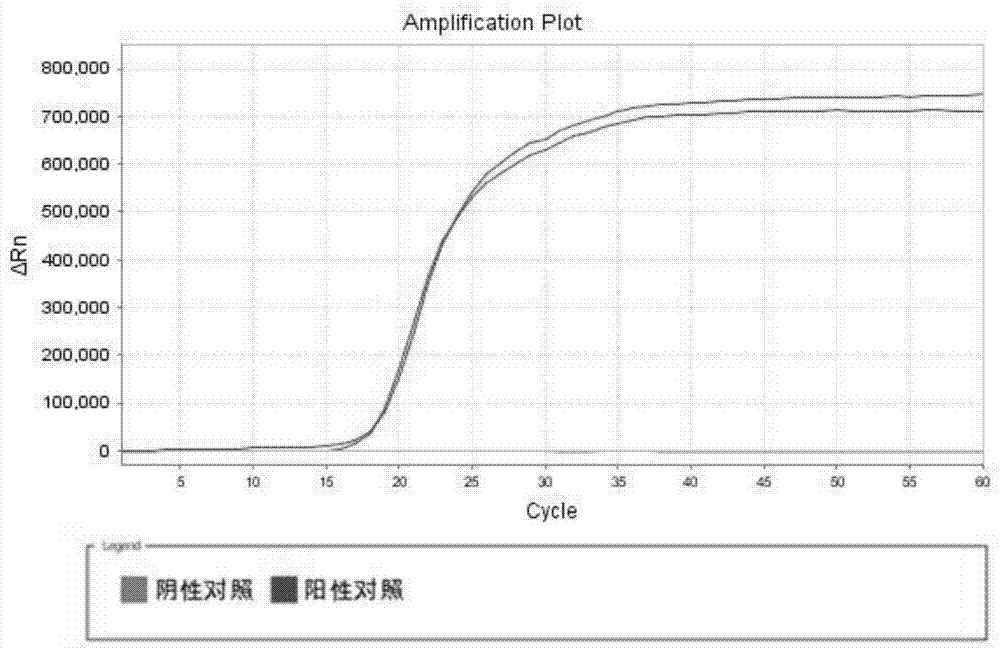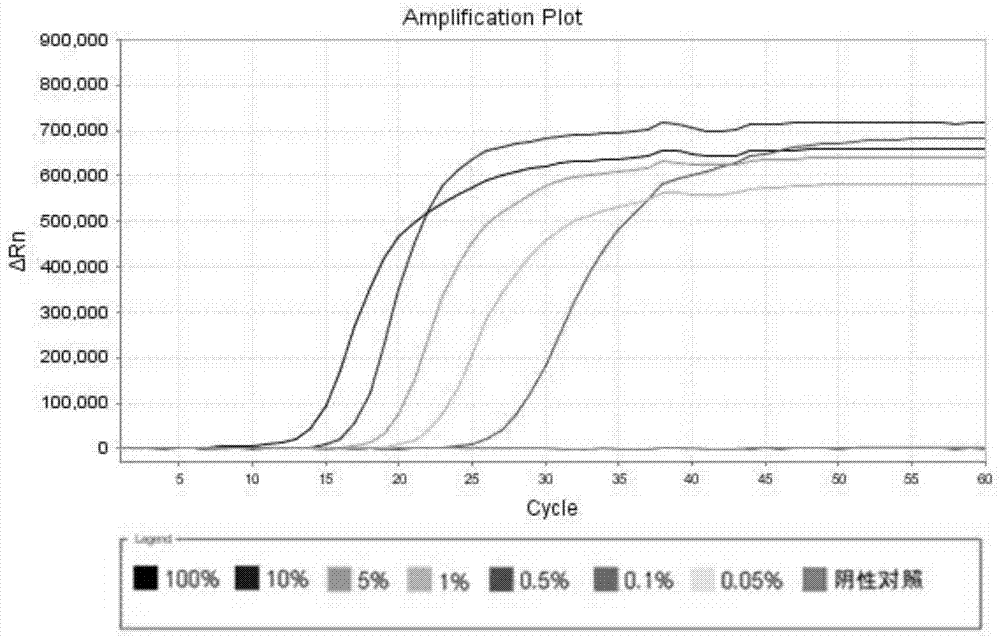Primer, kit and method for isothermal amplification detection of chestnut allergen
A technology of constant temperature amplification detection and constant temperature amplification, which is applied in biochemical equipment and methods, measurement/testing of microorganisms, DNA/RNA fragments, etc., can solve problems such as chestnuts, and achieve low probability of primer dimers, Strong strain specificity, high specificity effect
- Summary
- Abstract
- Description
- Claims
- Application Information
AI Technical Summary
Problems solved by technology
Method used
Image
Examples
Embodiment 1
[0059] Example 1 Design and Screening of Chestnut Allergen-Specific Isothermal Amplification Primers
[0060] Three sets of constant temperature amplification primers were designed according to the specific sequence of chestnut leafy-like protein mRNA, and each set of primers included outer primer 1 and outer primer 2, inner primer 1 and inner primer 2, loop primer 1 and loop primer 2. For primer screening, use the outer primers and inner primers in the 3 sets of primers for constant temperature amplification reaction. The 25 μL reaction system is as follows:
[0061] 5 μM each of outer primer 1 and outer primer 2, 40 μM each of inner primer 1 and inner primer 2, Bst 2.0 Warmstar DNA Polymerase 8U, Tris-HCl 20 mM, KCl 10 mM, pH 8.8, (NH4) 2 SO 4 10 mM, 0.1% Tween-20, dNTPs1.6mM, MgSO 4 0.8mM, betaine 0.8M, fluorescent dye SYTO-9 10μM, sample DNA to be tested 2μL, ddH 2 O to make up to 25 μL.
[0062] The reaction steps are as follows:
[0063] (1) Preparation of temp...
Embodiment 2
[0074] Example 2 Optimization of the constant temperature amplification reaction system for chestnut allergens
[0075] Using the above-mentioned specific constant temperature amplification primers SEQ ID NO: 1 ~ 6, with Mg 2+ The four conditions of concentration, betaine concentration, dNTPs concentration and reaction temperature are variable parameters to optimize the reaction conditions of constant temperature amplification:
[0076] (1) Mg 2+ Concentration optimization: set 4 Mg 2+ The concentration gradient is 0.4mM, 0.6mM, 0.8mM, 1.0mM in turn;
[0077] (2) Betaine concentration optimization: set 4 betaine concentration gradients as 0.6M, 0.8M, 1.0M, 1.2M;
[0078] (3) dNTPs concentration optimization: set 4 dNTPs concentration gradients to 1.2mM, 1.4mM, 1.6mM, 1.8mM in turn;
[0079] (4) Reaction temperature optimization: set 4 reaction temperature gradients in order of 63°C, 64°C, and 65°C.
[0080] When the reaction is in progress, the peak time of the reaction c...
Embodiment 3
[0086] Embodiment 3 Sensitivity detection
[0087] Chestnut standard samples were prepared into samples to be tested with mass concentrations of 100%, 10%, 5%, 1%, 0.5%, 0.1%, and 0.05%, respectively, for detection.
[0088] The DNA in the sample to be tested was extracted and purified by the CTAB method, and then detected by the method in Example 2. There are two methods for judging the results, curve method: the one with "S" type amplification curve is positive, and the one without "S" type amplification curve is negative, see image 3 ; Chromogenic method: if it appears green, it is positive, and orange is negative, see Figure 4 .
[0089] In this embodiment, both the curve method and the chromogenic method can detect 100%, 10%, 5%, 1%, 0.5% chestnut positive samples, but cannot detect 0.1% and 0.05% positive samples. The results of the two methods consistent.
PUM
 Login to View More
Login to View More Abstract
Description
Claims
Application Information
 Login to View More
Login to View More - R&D
- Intellectual Property
- Life Sciences
- Materials
- Tech Scout
- Unparalleled Data Quality
- Higher Quality Content
- 60% Fewer Hallucinations
Browse by: Latest US Patents, China's latest patents, Technical Efficacy Thesaurus, Application Domain, Technology Topic, Popular Technical Reports.
© 2025 PatSnap. All rights reserved.Legal|Privacy policy|Modern Slavery Act Transparency Statement|Sitemap|About US| Contact US: help@patsnap.com



